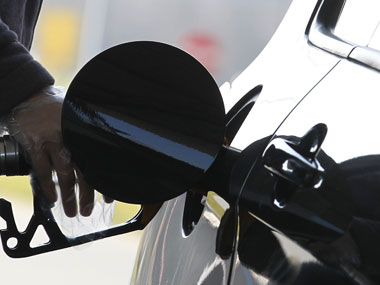Singapore: Brent crude held steady on Thursday, near a nine-month high of about $123, as supply worries caused by heightened tension between Iran and the West offset concern that a slowdown in the global economy could curb oil demand.
UN inspectors sent to visit the country’s nuclear installations declared their mission a failure, a setback likely to increase the risk of confrontation with the West.
A larger-than-expected build in crude stockpiles in the United States following weak economic data from China and Europe depressed US crude futures.
Brent crude for April delivery fell 18 cents to $122.72 by 0502 GMT after it rose on Wednesday for a third day to settle at $122.90, the highest in nine months.
US crude futures for April were down 37 cents to $105.91 after settling at a nine-month high of $106.28 a barrel the previous day.
“Any further news of escalating tensions in Iran or other Middle East or African countries will likely increase the risk premium, although our short-term view could be that prices could dip today on profit-taking as prices reach overbought territory,” said Natalie Robertson, a commodity strategist at ANZ bank.
Brent’s risk premium has risen closer to $15 a barrel from $5 to $10 previously after top Iranian crude buyers China and India planned to reduce imports from the Islamic Republic, Robertson said.
Japan could cut Iranian imports by as much as 20 percent or more this year, a local newspaper reported, following reductions planned by other buyers in Asia and Europe as Western sanctions made trade difficult.
Front-month Brent futures have risen about 9 percent from the start of the year as geopolitical and production issues in Iran, the North Sea, South Sudan, Syria and Yemen tightened supplies.
Goldman Sachs expects the spread between September US
[caption id=“attachment_222633” align=“alignleft” width=“380” caption=“Brent’s risk premium has risen closer to $15 a barrel from $5 to $10 previousl.”]  [/caption]
crude and Brent futures to narrow to $5 a barrel in six months following the scheduled June reversal of the Seaway pipeline to flow crude oil from Cushing to the U.S. Gulf Coast.
“WTI (West Texas Intermediate) prices will be closely tied to Brent prices, with WTI likely trading at a $3-$5 a barrel discount, reflecting the pipeline tariff economics,” analysts at the bank wrote in a February 22 note.
Front-month Brent crude’s premium against US crude was near $17 on Thursday after widening to close to $21 on February 7 as inventories at Cushing, Oklahoma, the delivery point for WTI, rose.
Asian shares and the euro fell on Thursday as the health of the global economy was back in focus after Wednesday’s data from Europe and China showed a slowdown in service and manufacturing activities.
Skyrocketing oil costs have turned US gasoline prices into a key issue for the 2012 presidential election season.
Three Democratic lawmakers on Wednesday urged the White House to signal it is ready to tap the nation’s oil stockpiles to combat surging fuel prices, arguing an “aggressive” strategy could tamp down speculation.
Germany said it has no plans to release any of its strategic oil reserves to combat rising oil prices.
“Stockpiles are only to be released if there is a substantial decline in oil supplies, rather than in response to higher prices,” ANZ’s Robertson said.
“If US oil prices rise above $110 a barrel we could see a hit on U.S. oil demand - and this lower demand profile will likely cap further price hikes, just as it did last year.”
Oil investors will focus next on inventory reports to be released by the US Energy Information Administration on Thursday at 1600 GMT.
US crude stockpiles rose by 3.6 million barrels in the week to February 17, data from the American Petroleum Institute showed, compared with analysts’ expectations for a 500,000 barrel build.
Reuters


)
)
)
)
)
)
)
)
)



